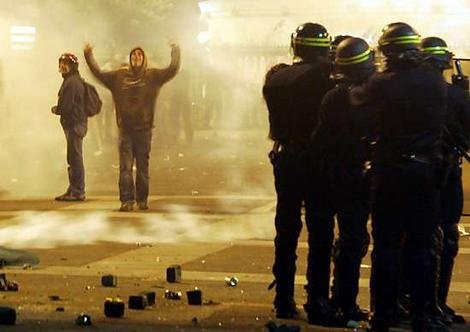
(reprinted by permission)
Margaret Jenkins, one of the grande dames of Bay Area modern dance, never seems to take on a dance project lightly. There's no fluff in her rigorous post-modern movement, no effort to appease or be easily understood.
To the uninitiated, in fact, plenty of her dances can appear downright daunting. With swift slicing arms, tossed legs, undulant torsos and obscure mini-dramas at nearly every turn, these can seem dances as mysterious as a surreal story in another tongue.
And if you don't know the language, how could you possibly translate the movement?
Jenkin's latest premiere Thursday, "Other Suns," at Project Artaud Theater in San Francisco, poses and answers this question in one brief but packed evening of stunning movement theater. "Other Suns" is the first part of a three-part work that will be presented in its entirety in 2009.

Here, the sixtysomething choreographer, who has been making dance in her native Bay Area for more than 30 years, set out to investigate the nature of symmetry. The problem was prompted by a collaboration with Chinese dancers from the Guangdong Modern Dance Company, in Guangzhou, China.
During the project, she urged the Guangdong dancers to be expressive and asymmetrical in their movement, but she found herself confronted by a dance culture devoted to ancient and modern practices of symmetry and balance. This led to the kind of deeper discourse for which Jenkins is renowned, one about balance and imbalance in dance, politics, society and nature. Issues of political strife and global warming were not far behind.

The choreographic result, set to haunting music by Bung-Ching Lam, the bright serialism of Paul Dresher and the stunningly elegant visual design of Alex V. Nichols, takes us on a ride as vertiginous and relentless as it is beautiful. As the piece opens with Nichols' constellation of hanging lights swaying in the theater's breeze, a jangly sculpture jutting through their center, the balances and ruptures to come remain hidden.
Five motionless dancers stand on the periphery of the space. A platform stage left, suggesting everything from Huck Finn's raft to a gallows platform holds dancer Melanie Elms, angled stolidly.
When the piece begins in earnest, Elms suddenly engages with dark-haired Matthew Holland at the edge of the platform. Elms nudges and thrusts her weight against his side, and we see the first images of a haunting asymmetry of a soft body against a hard wall.
"Suns" becomes a densely gestural piece, where Deborah Miller can make angling arms seem to conjugate a condition, or Joseph Copely's balletic feet can hold a conversation with the floor. But Jenkins has also found a stunning new synthesis here that unites the hectic language of the limbs with morphing group sculptural forms, tied together with her unflinching commitment to beauty.
With time, duos, trios and line patterns evolve. Walls of bodies arise and fall. The small platform rises and reveals a pool set into the stage. The individuality of the other dancers becomes increasingly apparent, and the uniqueness of each (also Copely, Kelly Del Rosario, Steffany Perroni, Holland, Miller and Ryan T. Smith) becomes indispensable to the character of the whole.
Never one to hit us over the head with her politics, Jenkins nevertheless makes them clear. In the last moments of the dance Thursday, they are crystal clear as Copely runs downstage, leaps and hurls an invisible object at an invisible foe. With the group looking on, he repeats the act again and again, wearily, beautifully, hopefully. He keeps going, even as the lights come down.


No comments:
Post a Comment